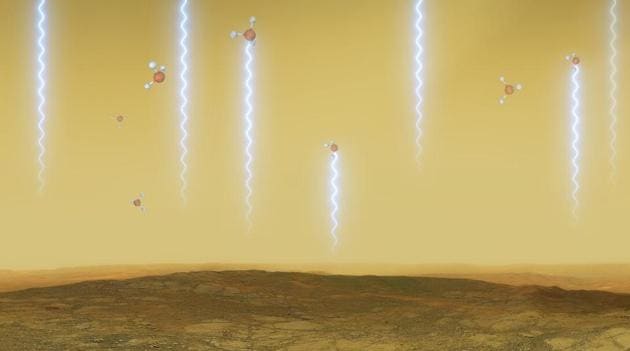Venus, named for the goddess of love, is no cuddly place
Scientists have spotted evidence of potential life on the planet Venus, though they emphasized that more work needs to be done to confirm whether or not life - possibly aerial microbes - exists or whether there is an alternative non-biological explanation for their findings.
Scientists have spotted evidence of potential life on the planet Venus, though they emphasized that more work needs to be done to confirm whether or not life - possibly aerial microbes - exists or whether there is an alternative non-biological explanation for their findings. Here is a look at key facts about the planet Venus, based on information from the U.S. space agency NASA and recent research findings. Venus, with a diameter of about 7,500 miles (12,000 km), is slightly smaller than Earth. It is the second planet from the Sun and is Earth’s closest planetary neighbour. Venus spins from east to west, the opposite direction from all the other planets in our solar system aside from Uranus. Venus also experiences the longest day of any planet in the solar system, taking 243 Earth days to complete a rotation. Aside from the sun and moon, it is the brightest object in Earth’s night sky. Venus gets its name from the ancient Roman goddess of love and beauty.

Its thick atmosphere traps in heat in what is considered a runaway greenhouse effect, rendering Venus the solar system’s hottest planet. Surface temperatures reach 880 degrees Fahrenheit (471 degrees Celsius), hot enough to melt lead. But at the level where its harshly acidic clouds reside, roughly 30 miles (50 km) above the Venusian surface, temperatures are much more mild. The atmosphere is made up mainly of carbon dioxide, with the clouds made up mostly of sulfuric acid. Scientists believe that Venus long ago may have possessed conditions that could have allowed for living organisms to evolve, though its surface now is considered completely inhospitable to life. The clouds, however, have been considered a potential haven for aerial microbes to survive.
Scientists said in July they have identified 37 volcanic structures on Venus that appear to be recently active - and probably still are today - painting the picture of a geologically dynamic planet and not a dormant world as long thought. Many scientists had thought Venus, lacking the plate tectonics that gradually reshape Earth’s surface, was essentially dormant geologically for the past half billion years. The surface of Venus is covered with craters, volcanoes, mountains and large-scale lava plains. The tallest Venusian mountain, called Maxwell Montes, stands 20,000 feet high (8.8 km kilometers), similar to Earth’s Mount Everest.
(This story has been published from a wire agency feed without modifications to the text.)






